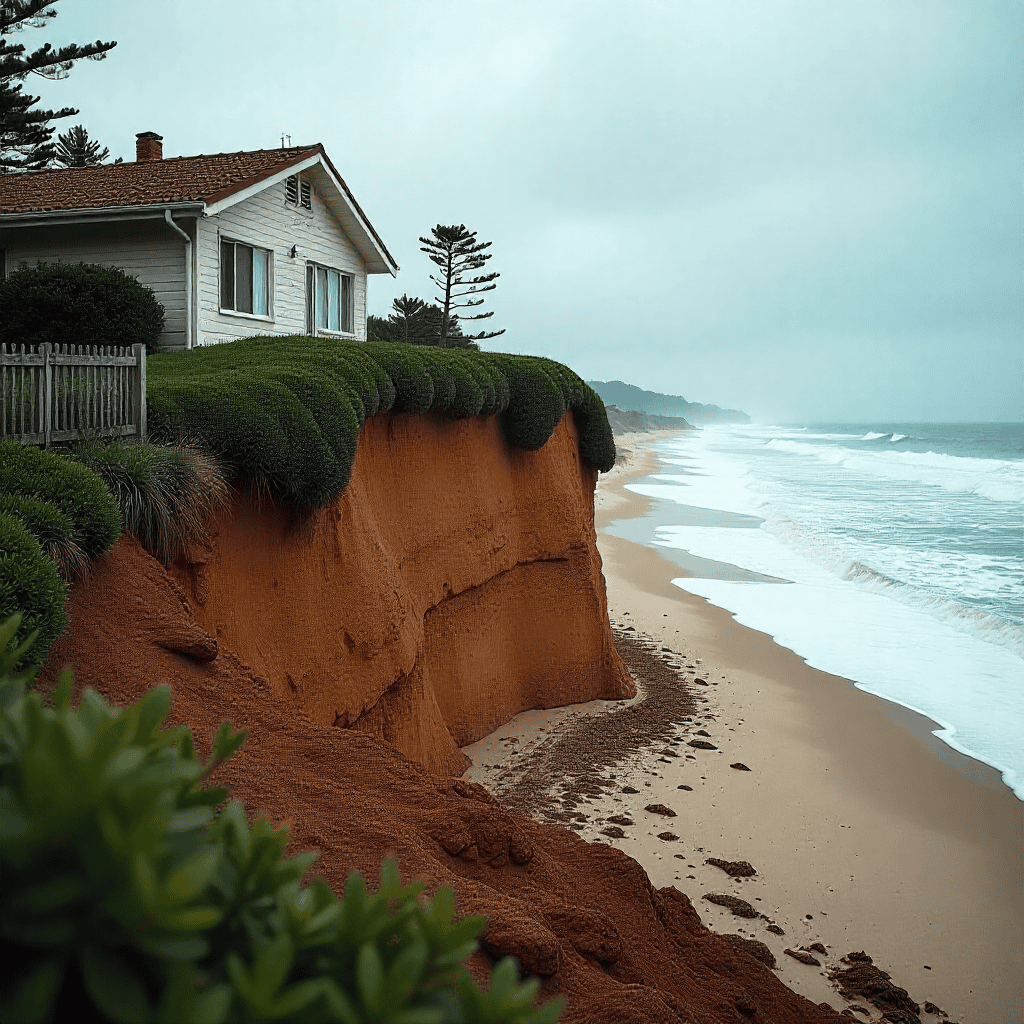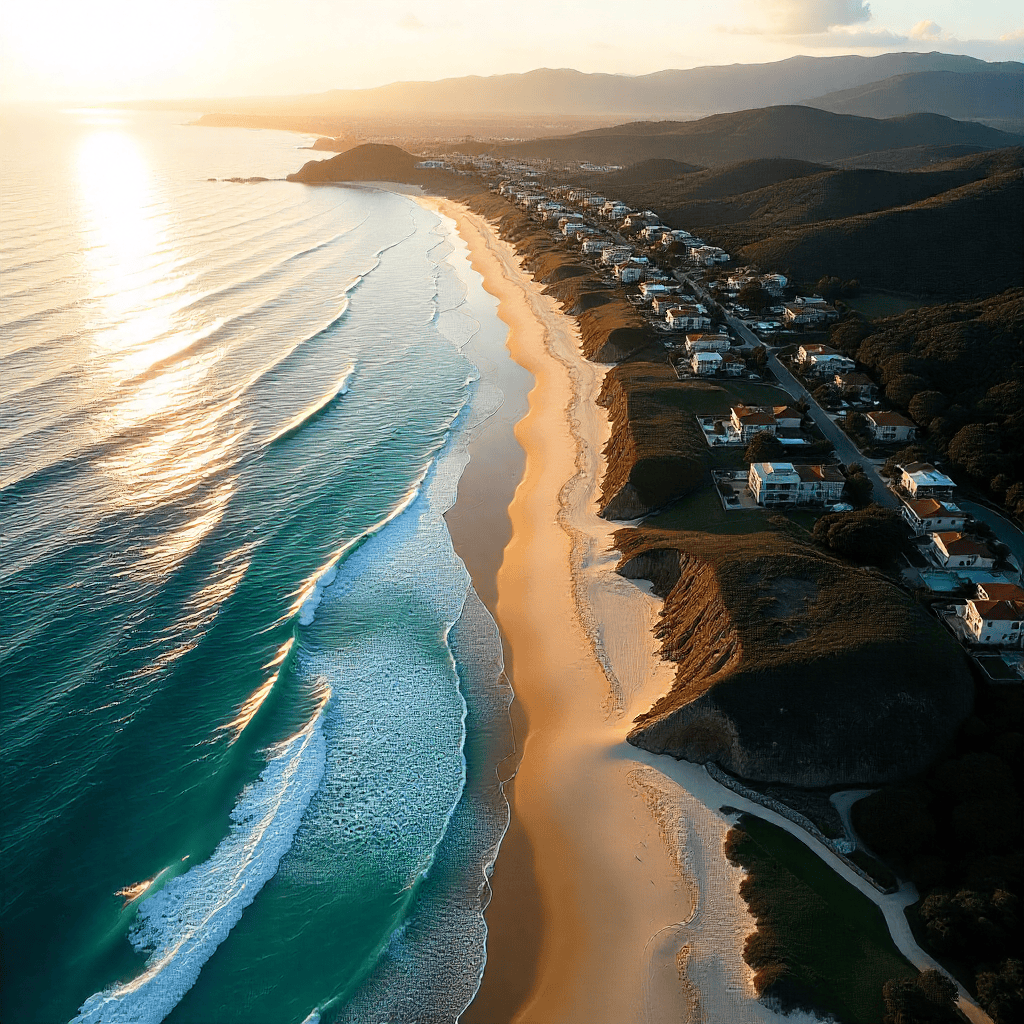Northern Beaches Best Local Landscapers
Professional Coastal Erosion Retaining Walls
Get a Free Estimate
Expert Coastal Erosion Retaining Walls for Northern Beaches Homes
If you’re a Northern Beaches property owner, you’ve probably stood at your back fence lately, looking out at the water and wondering if your home could be next. Maybe you’ve noticed your lawn getting smaller each year, or perhaps you’ve seen the way the sand disappears after every big tide. That gnawing feeling in your stomach? It’s completely justified.
Here’s what most people don’t realize: coastal erosion walls aren’t just about stopping sand from washing away. They’re about protecting what might be your family’s biggest financial investment while giving you back the peace of mind to actually enjoy living by the ocean.
We’ve been building coastal erosion retaining walls specifically for Northern Beaches properties for over 15 years. We understand how the longshore drift works differently at Long Reef compared to Bilgola. We know why traditional retaining walls fail when they face the salt spray and wave action that comes with living 50 meters from the beach. And we’ve learned exactly which materials and techniques actually survive the unique challenges of our coastline.
When you work with us, you’re not just getting a retaining wall – you’re getting marine-grade engineering that’s designed to protect your property for decades, not just until the next big storm.
Marine-Grade Materials That Survive Northern Beaches Conditions
Reinforced concrete with marine additives
It forms the backbone of most successful coastal installations. But here's the thing - regular concrete is basically ocean food. Salt water gets into the pores, reaches the steel reinforcement, and starts a corrosion process that'll crack your wall apart from the inside. Marine-grade concrete uses special additives that make it nearly impermeable to salt water, plus we use 316-grade stainless steel reinforcement that actually gets stronger in marine environments.
Geofabric and rock armor combinations
Geofabric and rock armor combinations work when you need protection that can flex with wave action rather than trying to fight it. We use industrial-grade geotextiles that can handle 50-year storm events, backed by carefully sized rock armor that dissipates wave energy instead of reflecting it back to sea. This approach works particularly well in areas like Bilgola and Avalon where you're dealing with irregular coastlines
Interlocking concrete units
Our go-to solution for areas that need maximum wave energy absorption. These aren't your standard concrete blocks - we're talking about specially designed units that lock together to form flexible, self-healing barriers. When individual units get damaged by storm action, the system redistributes loads to undamaged sections rather than failing catastrophically.
Living shoreline solutions
Living shoreline solutions combine engineered protection with native vegetation to create barriers that actually get stronger over time. We use native coastal plants like Coastal Tea Tree and Beach Spinifex to stabilize sand and reduce wave energy, supported by engineered foundations that can handle the biggest storms while the vegetation establishes.
Engineering Approaches for Different Coastal Environments
Different coastal environments need unique solutions – what works in Pittwater won’t work in exposed Narrabeen.
Sheet pile walls – steel or concrete sheets driven 8–12m deep, ideal for unstable foundations in erosion-prone areas like Collaroy.
Mass concrete walls with wave-return features – built to withstand heavy storm waves and redirect energy back to sea.
Gabion systems with geotextile backing – flexible rock-filled baskets with drainage, perfect for irregular coastlines and changing sand levels.
Hybrid hard/soft protection systems – combine engineered walls for immediate storm protection with natural sand movement and vegetation for long-term resilience.

Long-term Coastal Management and Maintenance
Ongoing Care is Essential: Coastal retaining walls need continuous monitoring and maintenance to last 50+ years; neglect can cause failure within a decade.
Climate Adaptation: Walls should be designed for upgrades (e.g., sea level rise, drainage, wave energy management) rather than full replacement.
Monitoring Systems: Tracking wall stability, drainage, and wave impact helps implement proactive upgrades before emergencies.
Regular Maintenance:
Annual inspections detect hidden issues early.
Rapid storm damage repair prevents small issues from becoming structural failures.
Drainage maintenance prevents hydrostatic pressure build-up, the leading cause of wall failure.
Community & Regional Coordination:
Shared protection with neighbors reduces costs and improves effectiveness.
Integration with council sand nourishment and coastal plans ensures compatibility and resilience.
Participation in regional monitoring provides insights into long-term changes.
Why Choose Us for Coastal Erosion Retaining Walls
Specialized Expertise
We design retaining walls built to handle Australia’s toughest coastal conditions.
Proven Experience
Decades of successful projects across the Northern Beaches and beyond.
Proven Experience
Every wall is engineered for your site’s unique soil, tides, and wave action.
Long-Term Protection
Durable designs that adapt to future sea level rise and climate changes.
Emergency & Maintenance Support
From urgent stabilization to ongoing care, we’ve got you covered.
Local Trust & Compliance
Fully aligned with council guidelines and trusted by homeowners across the coast.
Comprehensive Service From Emergency to Long-term Protection
From emergency response to long-term protection means you’re working with a single team that understands your property’s complete coastal protection needs. Emergency repairs done by different contractors often create complications for permanent protection works. Our integrated approach ensures that emergency stabilization works support rather than complicate long-term protection goals.
Full permit management and council liaison takes the regulatory burden off property owners who are already dealing with the stress of coastal erosion threats. We maintain relationships with all the relevant approval authorities, and we understand how to navigate the complex approval processes that coastal protection works require.
Ongoing monitoring and maintenance programs ensure that your coastal protection investment remains effective for decades rather than failing after a few years due to neglect. Coastal protection systems need specialized maintenance that most contractors don’t understand, and our long-term service programs ensure that small problems get addressed before they become major failures.

Emergency Contact and Next Steps
If you’re dealing with active erosion right now, don’t wait for it to get worse. Emergency assessment and stabilization can often prevent catastrophic loss while proper long-term solutions are being designed and approved.
24/7 emergency response means that when you discover erosion damage, you can get professional help within hours rather than waiting days or weeks for assessment appointments. Coastal erosion doesn’t happen on business hours schedules, and neither do our emergency response capabilities.
Free coastal vulnerability assessments help property owners understand their specific erosion risks and protection options before crisis situations develop. These assessments identify current vulnerabilities, predict likely future problems, and outline protection options that can prevent emergency situations.
Professional consultation and design services ensure that your coastal protection investment is properly designed for your specific site conditions and regulatory requirements. Coastal protection isn’t something you want to approach with generic solutions – every site has unique challenges that require specialized engineering approaches.
FAQs About Coastal Erosion Retaining Walls
somewhere, and it often ends up attacking the beach or property next door.
Sea walls can also create what we call “end effects” – erosion that wraps around the edges of the wall and attacks the property from the sides. We’ve seen this happen particularly in areas like Avalon where properties have different setbacks from the beach. Your wall might protect your backyard perfectly, but if it’s not properly integrated with your neighbors’ protection, you can end up with erosion attacking your property boundaries.
Gravity walls work by sheer weight – think big stone or concrete blocks. We use these for lower-exposure areas like Pittwater where wave action isn’t too severe. The salt air means we can’t use standard concrete though – everything needs marine-grade materials.
Cantilever walls are those L-shaped concrete walls that most people picture. We use these a lot in Collaroy and Narrabeen, but they need special foundations that go deep enough to handle undermining from wave action.
Anchored walls use cables or rods driven back into stable ground behind the wall. These work well on the cliff faces you see around Palm Beach, but installing them requires helicopter access and specialized equipment.
Reinforced soil walls use layers of material to build up protection gradually. We use these with native vegetation for what we call “living shoreline” approaches – they work particularly well in the more sheltered areas of the Northern Beaches.
A properly engineered coastal wall using marine-grade materials should last 50-75 years with regular maintenance. But that’s assuming you’re doing annual inspections, cleaning out drainage systems, and addressing small problems before they become big ones.
For Northern Beaches coastal walls, you need a specific sequence of materials working together. Right behind the wall, we use clean drainage aggregate – usually 20mm blue metal with specific grading that allows water flow but prevents sand migration.
Next comes a layer of geofabric that acts like a filter – water can pass through but sand can’t. This prevents your drainage aggregate from getting clogged with sand over time.
Coastal walls can provide some flood protection, but they’re not designed primarily as flood barriers. On the Northern Beaches, most flooding comes from storm surge combined with high tides, and walls designed for erosion protection can help with this.
But there are limitations. Walls designed for wave action aren’t necessarily designed for the hydrostatic pressure of sustained flood waters. And coastal flooding often comes with debris – logs, boats, even cars – that can damage walls not designed for impact loads.
The bigger issue is that effective flood protection usually requires regional solutions, not individual property walls. If you build a wall that stops flooding on your property but diverts it to your neighbors, you might end up with liability issues and community conflicts.




